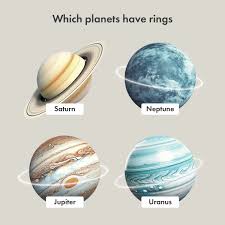Stamp: John Glenn, astronaut, 1962 (Saint Vincent and The Grenadines 1999)
John Glenn, astronaut, 1962 (Saint Vincent and The Grenadines 1999)
06 May (Saint Vincent and The Grenadines ) within release Space Exploration (1999) goes into circulation Stamp John Glenn, astronaut, 1962 face value 1 East Caribbean dollar
| Stamp John Glenn, astronaut, 1962 in catalogues | |
|---|---|
| Stanley Gibbons: | Sg: VC 4310 |
Stamp is square format.
Also in the issue Space Exploration (1999):
- Stamp - 'A-I rocket', 1959 face value 1;
- Stamp - 'Arriane' rocket, 1980 face value 1;
- Stamp - 'Explorer' rocket, 1958 face value 1;
- Stamp - 'Fredom 7' rocket, 1961 face value 1;
- Stamp - 'Lunokhod Explorer', 1970 face value 1;
- Stamp - 'Salyut 1', 1971 face value 1;
- Stamp - 'Viking Lander', 1975 face value 1;
- Stamp - Ancient observatory face value 1;
- Stamp - Apollo 4, 1967 face value 1;
- Souvenir Sheet - Atlantis and Mir face value 5;
- Stamp - Bruce McCandles, astronaut, 1984 face value 1;
- Stamp - Columbia, 1981 face value 1;
- Stamp - Edward White, astronaut, 1965 face value 1;
- Stamp - Edwin Aldrin, 1969 face value 1;
- Stamp - Galileo Galilei face value 20;
- Stamp - Gemini 4, 1965 face value 1;
- Stamp - German V-2 rocket, 1942 face value 1;
- Stamp - Hubble telescope, 1990 face value 1;
- Stamp - John Glenn, astronaut, 1962 face value 1;
- Stamp - Konstantin Tsiolkovsky face value 50;
- Stamp - Laika, 1957 face value 1;
- Stamp - Luna 3, 1959 face value 1;
- Stamp - Lunar rover, 1971 face value 1;
- Stamp - Mariner 10, 1974 face value 1;
- Stamp - Mir, 1986 face value 1;
- Stamp - Robert Goddard face value 70;
- Souvenir Sheet - Saturn 5, 1969 face value 5;
- Stamp - Sir Isaac Newton face value 90;
- Stamp - Sir William Hercher's telescope, 1781 face value 1;
- Stamp - Skylab, 1973 face value 1;
- Mini Sheet - Space Exploration face value 9*1;
- Mini Sheet - Space Exploration face value 1;
- Mini Sheet - Space Exploration face value 9*1;
- Stamp - Sputnic 1, 1957 face value 1;
- Stamp - Sοyuz 11, 1971 face value 1;
- Stamp - Yuri Gagarin, cosmonaut, 1961 face value 1;
Stamp John Glenn, astronaut, 1962 it reflects the thematic directions:
An astronaut (from the Ancient Greek ἄστρον (astron), meaning 'star', and ναύτης (nautes), meaning 'sailor') is a person trained, equipped, and deployed by a human spaceflight program to serve as a commander or crew member aboard a spacecraft. Although generally reserved for professional space travelers, the term is sometimes applied to anyone who travels into space, including scientists, politicians, journalists, and tourists
A planet is a large, rounded astronomical body that is generally required to be in orbit around a star, stellar remnant, or brown dwarf, and is not one itself. The Solar System has eight planets by the most restrictive definition of the term: the terrestrial planets Mercury, Venus, Earth, and Mars, and the giant planets Jupiter, Saturn, Uranus, and Neptune. The best available theory of planet formation is the nebular hypothesis, which posits that an interstellar cloud collapses out of a nebula to create a young protostar orbited by a protoplanetary disk. Planets grow in this disk by the gradual accumulation of material driven by gravity, a process called accretion.


